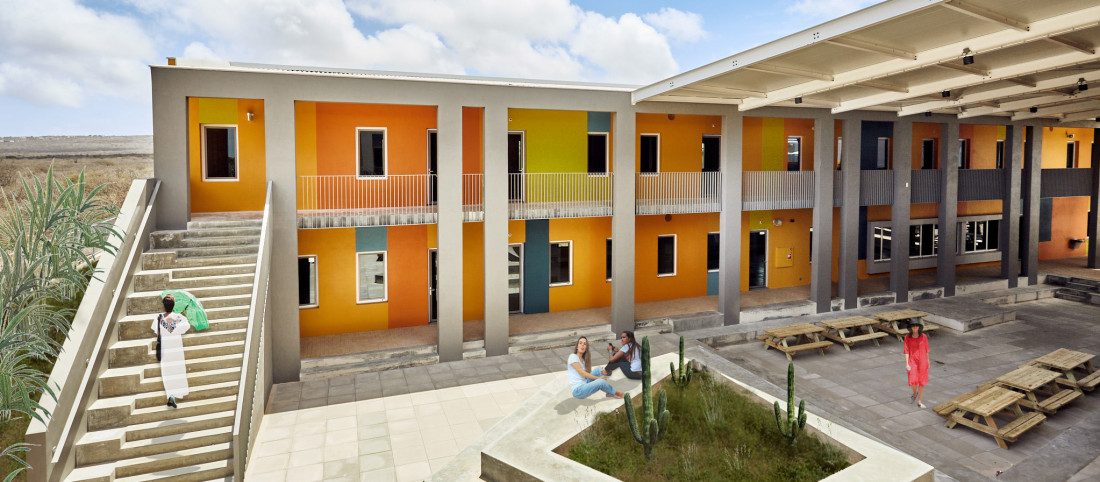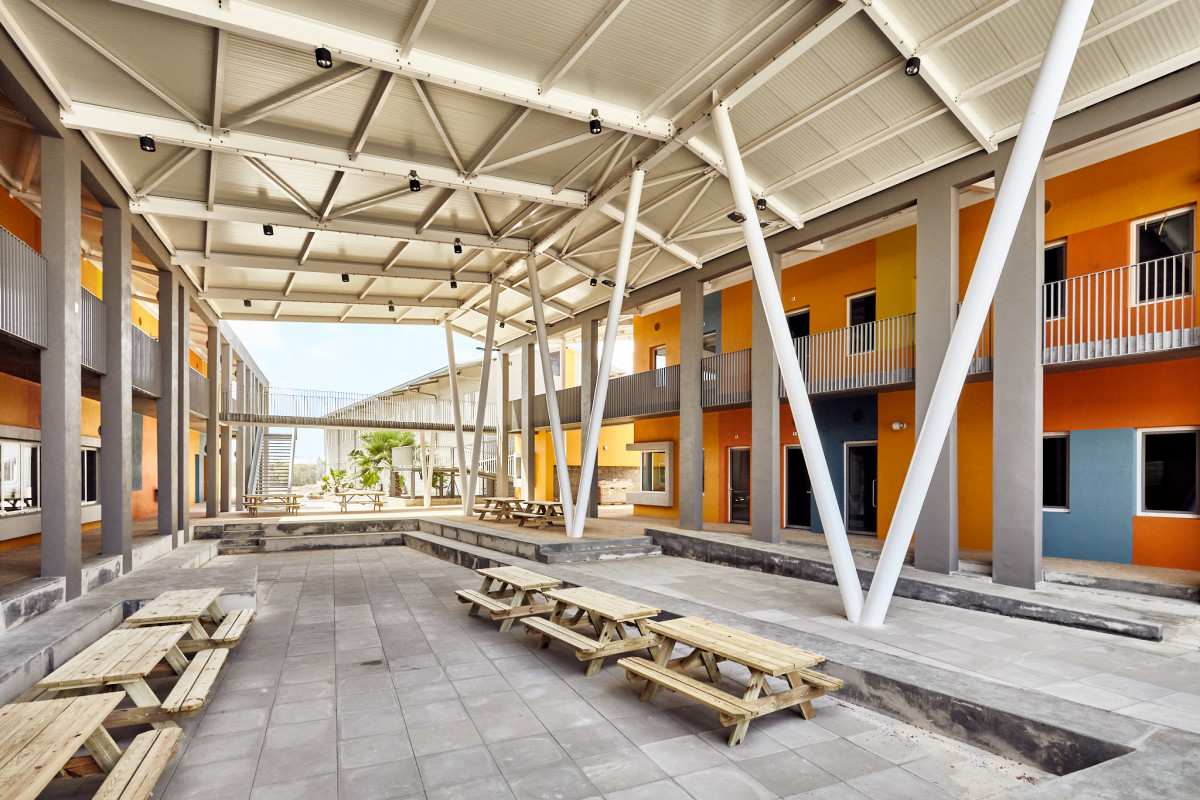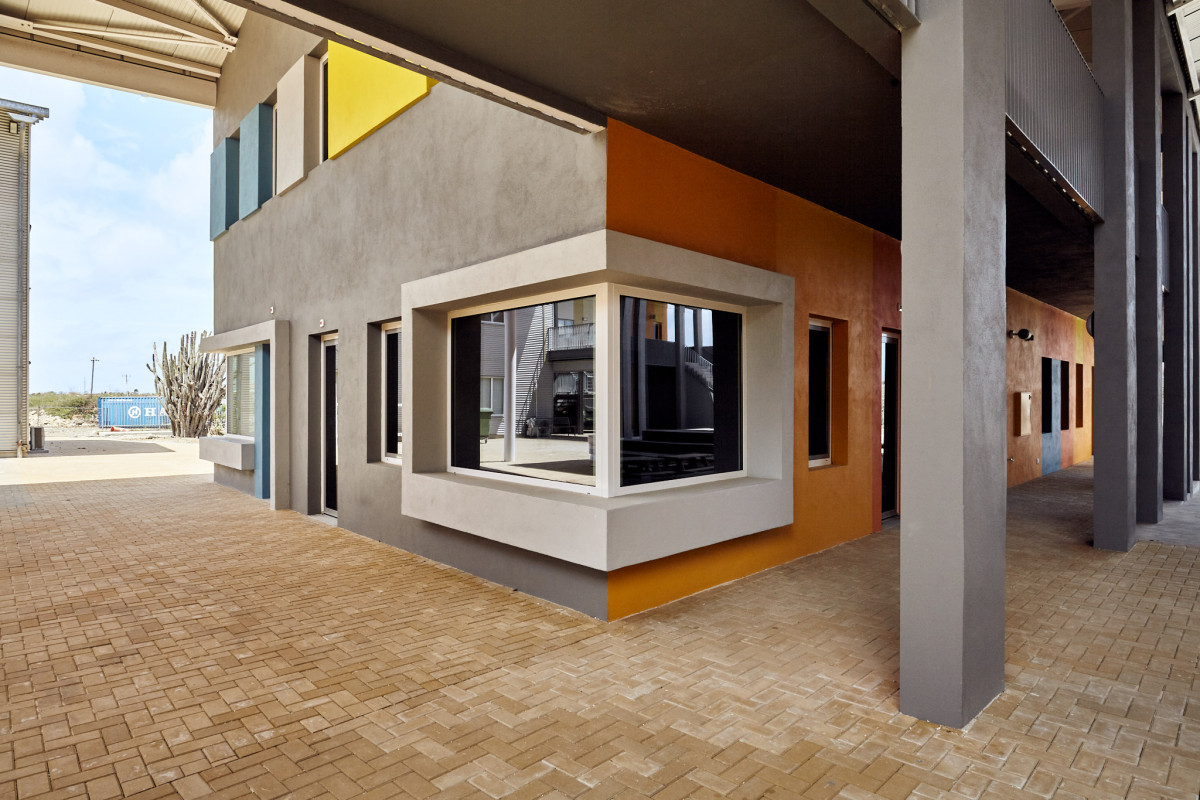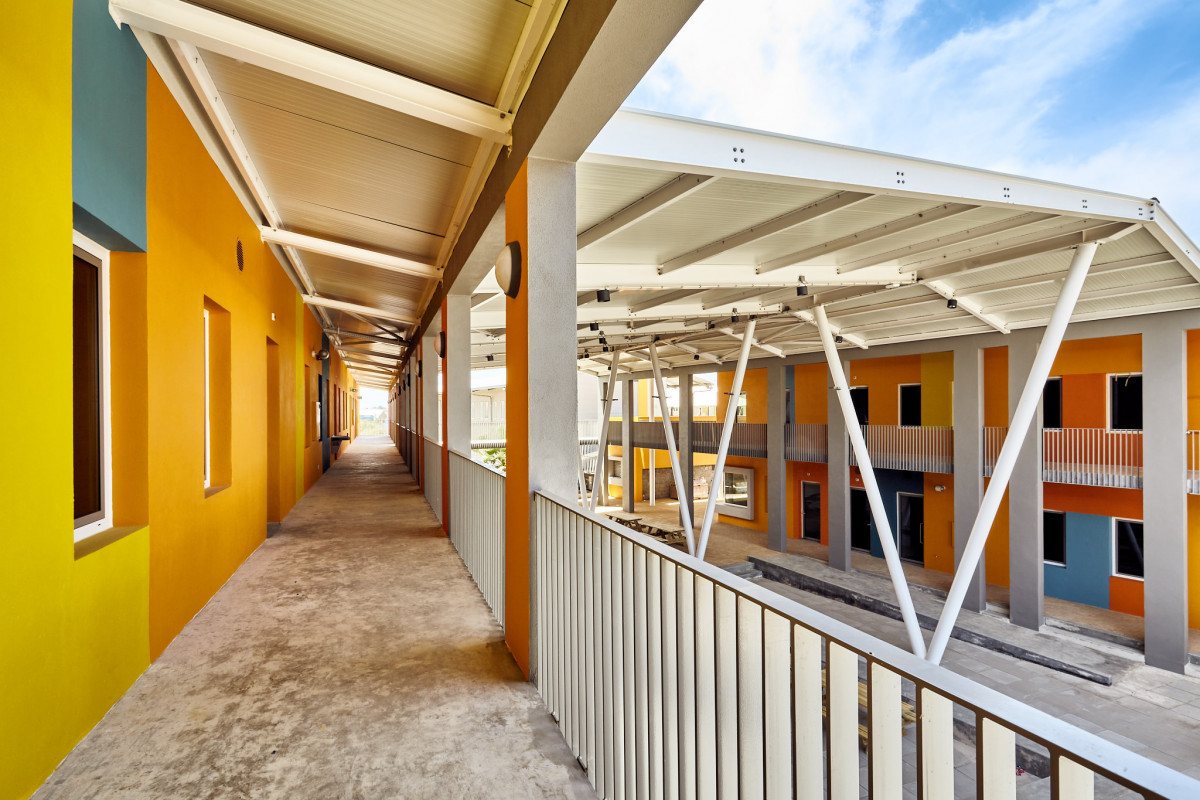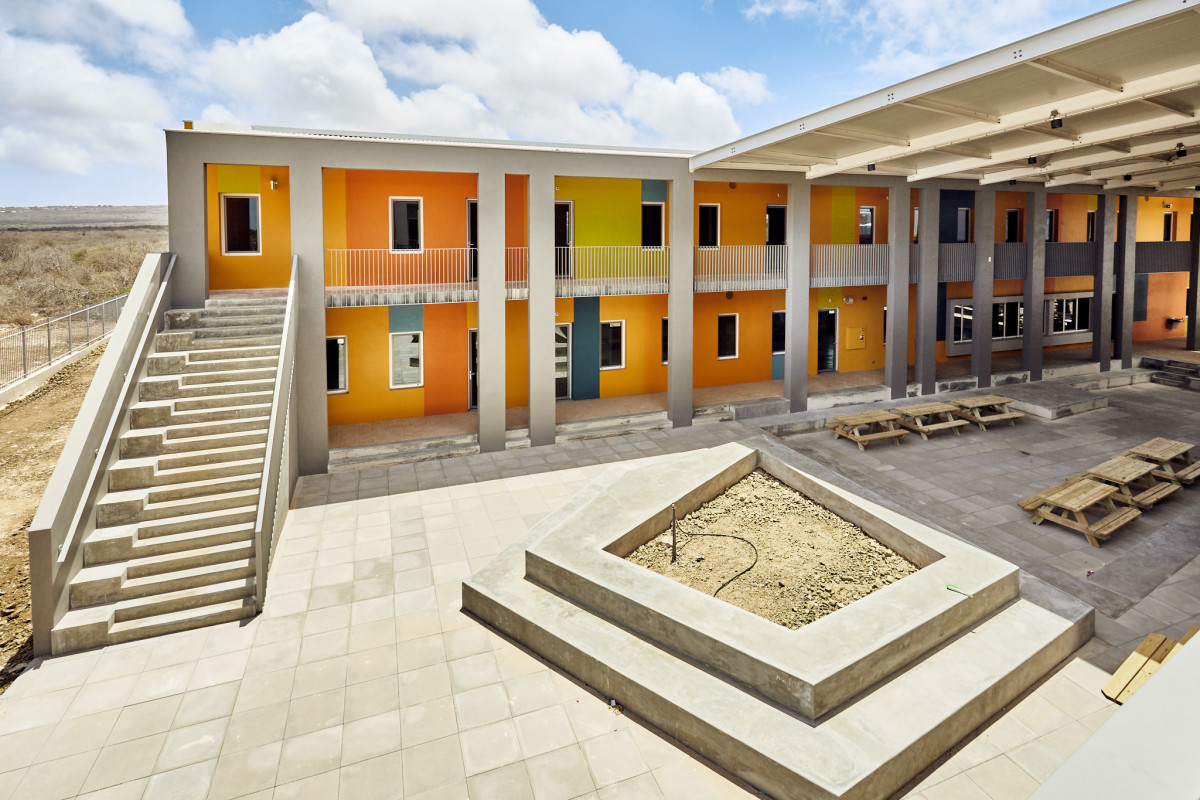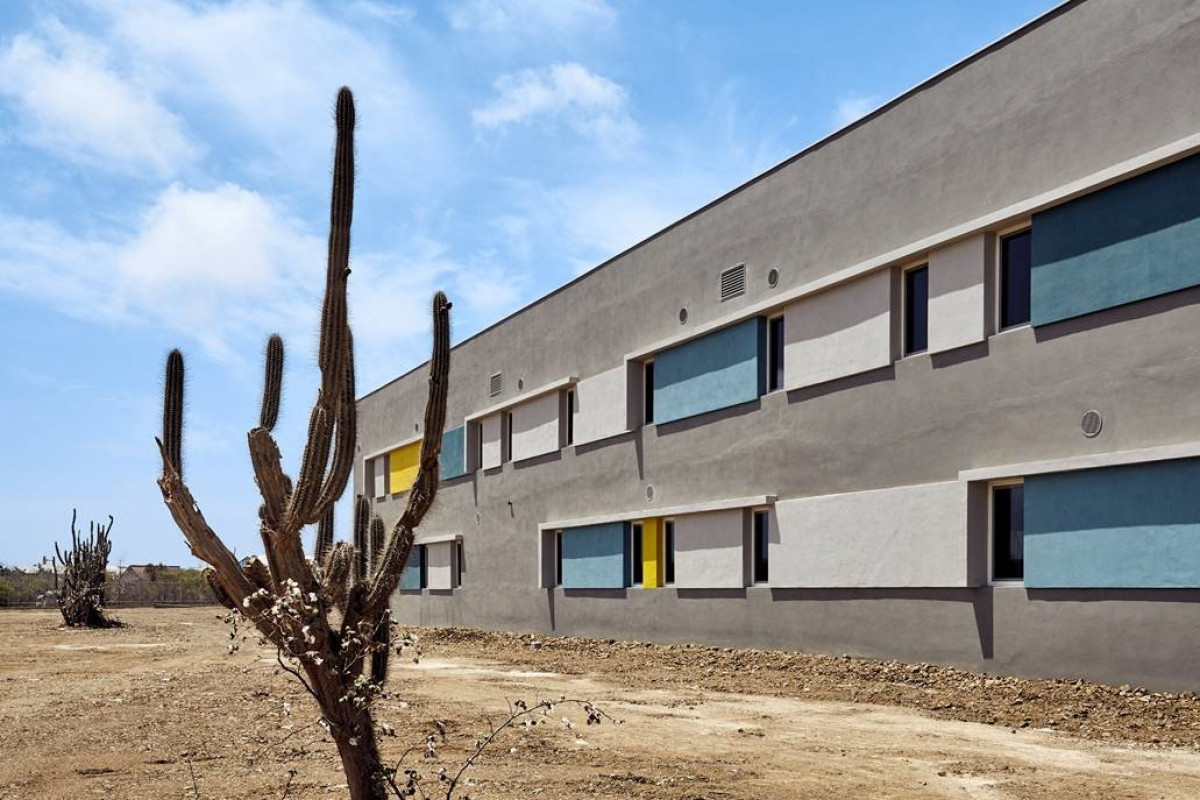The Liseo Boneriano, on the Dutch Caribbean island of Bonaire, is a secondary school for MAVO, HAVO and VWO. A section of the school was housed in a complex on the Kaya Amsterdam in Kralendijk, the island capital. Over the past few years, the number of pupils has increased considerably, which created the need to expand this location. The team, consisting of atelier PRO and Jacobs architects, designed an extension to the existing buildings, enabling the school to accommodate both the junior and senior years here.
Main objective was to create an elegantly coherent ensemble, with the outdoor area between the school buildings as a focal point in the design; we transformed this into a public space with both an important role for social interaction and a newly added educational function. By drawing inspiration from Bonaire's vernacular architecture, we were able to respond to the local climate conditions.

A building ensemble
For the school extension, we chose to use the bold and basic design language of the original complex, which we enriched with local architectural details and colours. The result is coherence: existing and new blend into one - in line with the aim to create a single identity for the three different educational levels.

Keep the sun out, let the wind in
The design takes local climate aspects into account, and draws on local solutions. Typical of the architecture of Bonaire are the generous covered outdoor areas and overhangs, which cast shadows on the façade and on the space outside. Also characteristic are the pronounced window frames with deep recesses to keep out the sunlight, and the open Bonairean masonry through which the wind can blow freely, but which blocks the sun.

Buildings oriented to the wind
Just like the existing school complex, the extension consists of two elongated buildings. These are oriented east-west to the wind, one wing in line with a section of the existing building, the other in parallel. The space between the new buildings is covered with a canopy, for shade and protection against heavy rains. There are galleries on the inner facades, in line with the existing complex. The new wings are slightly offset, so as to create a perspective effect on the interior: from one side, the space appears to be shorter, while from the other side it appears to be longer.
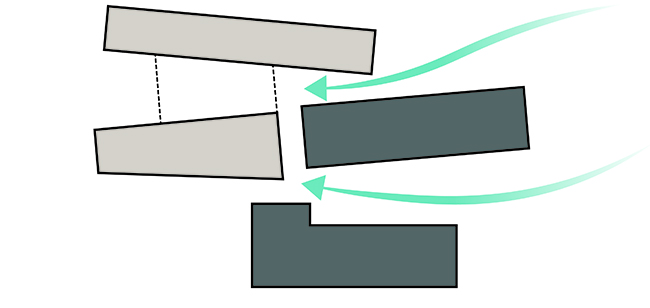
Outdoor assembly hall and schoolyard
In the Caribbean, it is customary to locate traffic circulation areas outdoors. The central auditorium and the schoolyard have been merged into one covered space, outside between the school buildings, shaded by the canopy and cooled by the sea breeze. It offers pupils and staff the opportunity to work outside; thus, a new public space has been created, an interaction zone where people can meet in a different, typically Caribbean atmosphere, informally and outside of the classroom.
Couleur locale
We also drew inspiration from the colours of buildings and the landscape on Bonaire, an alternation between earthy hues and bright accent colours. On the interior facades, around the covered outdoor space, the new building is characterised by a feast of colours with warm yellow and orange tones, supplemented by cool blue accents; on the exterior facades, earthy shades predominate, reinforcing the coherence between the existing building and the new extensions. This gives the school a distinct individuality: cool and Caribbean. The colourful inner facades stand in sharp contrast with the kunuku, the stark and scalding landscape overgrown with rough cacti on the outside of the school. The building resembles a tropical fruit, rough and enclosed on the outside and attractive and colourful on the inside.
Improved logistics and social safety
To improve the logistics within the school and its connection to the outside world, a new entrance was created, right in between the old and new part of the complex. The theory classrooms and the learning centre are located in the northern wing, the other school sections in the southern part in the centre. This is also where the teachers' cluster and administration are located. This allows for the continuous supervision of the covered schoolyard, contributing to an overall sense of safety. Room has been left to create sports fields around the buildings in the future. The new layout make it easy to read the ensemble as a clear and single unity.
The Liseo Boneriano constitutes an informal, attractive public place for Bonaire's youth, where learning and meeting are encouraged.

